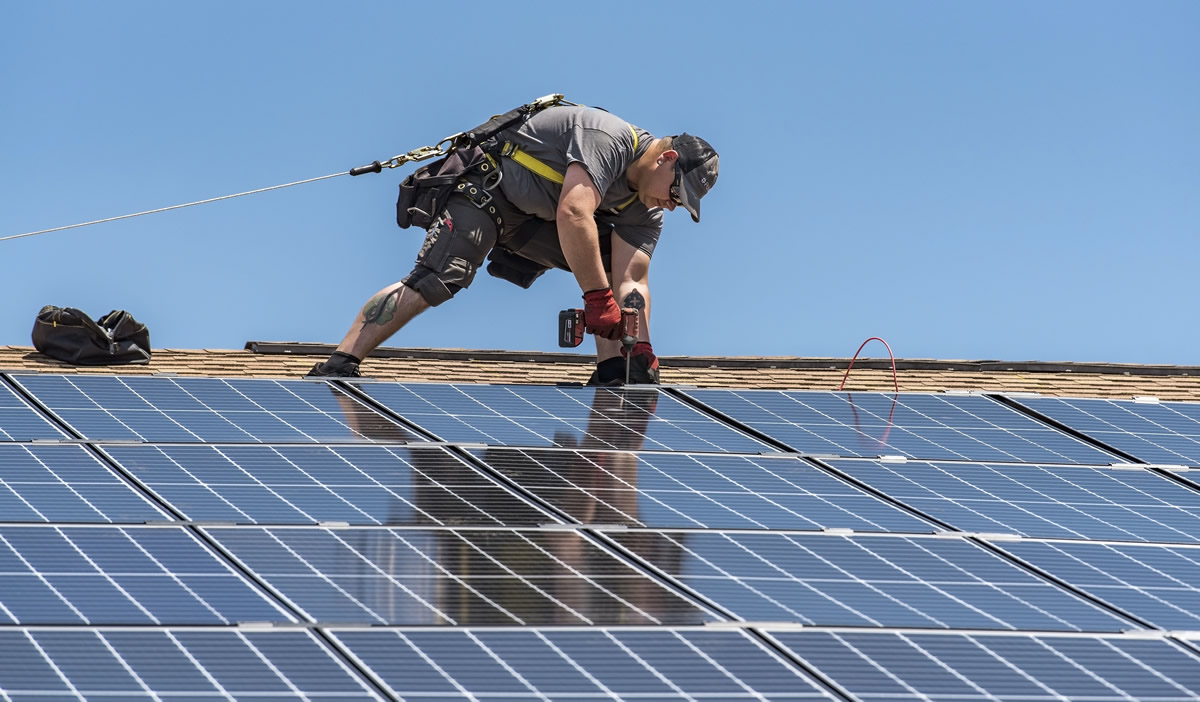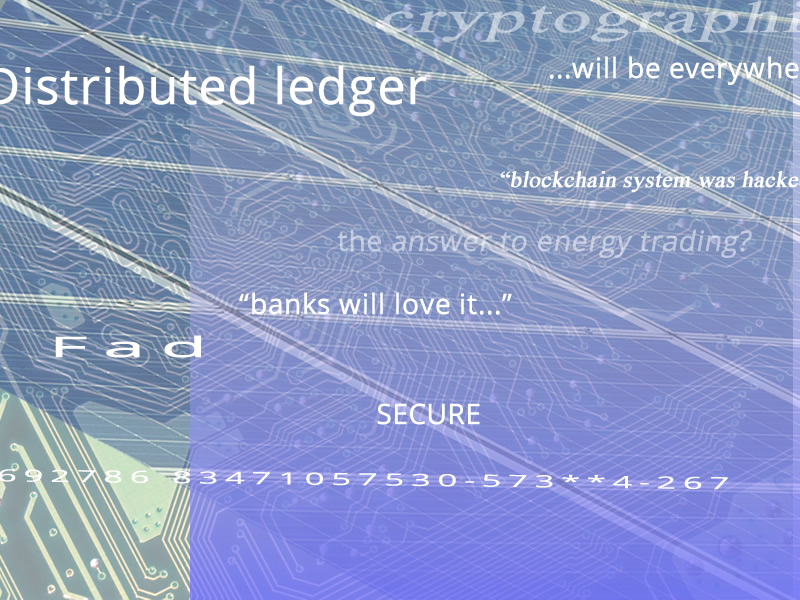I was recently asked to speak on the topic “Is blockchain the enabling technology for microgrids?” Since I am a microgrid enthusiast with a lot of experience in microgrids and modeling, although not a builder of either technology, I agreed. The title bothered me, however, as microgrids do not need blockchain to enable anything. Hybrid microgrids make economic and environmental sense on their own in many places. And blockchain is active in the energy world. This fall there were two (that I know of) competing conferences focused on the intersection of blockchain and energy – the 2nd Annual Global Power and Energy Blockchain Conference and the Blockchain in Energy Forum. The field of energy is broad, incorporating oil and gas as well as renewables, but in both cases the focus was primarily on renewables, smart grids, and the changing utility world.
Before we dive into blockchain and microgrids, let’s get on the same page regarding what these technologies are. Then we can talk about how they might interact (and a few examples where they already are).

Blockchain
“A blockchain is, in the simplest of terms, a time-stamped series of immutable record of data that is managed by cluster of computers not owned by any single entity. Each of these blocks of data (i.e. block) are secured and bound to each other using cryptographic principles (i.e. chain).” (From What is Blockchain Technology?) Although blockchain is widely associated with the creation of Bitcoin in 2009, computer scientists were exploring the concept of cryptographically secured chains of blocks that could not be tampered with during the period 1991 through 2008 (The History of Blockchain Technology – Must Know Timeline). So blockchain became relevant in 2009, but it was decades in the making. Ethereum blockchain was developed in 2015, with the new ability to record information beyond transactions, such as text or contracts. These “smart contracts” or something similar is likely to be critical to how blockchain will be used in the energy world.
Blockchain is now in a period of rapid expansion and experimentation. The potential for trustless, immutable, distributed ledgers is enormous, and as the internet of things evolves, it’s likely that some form of blockchain or a related technology will eventually impact virtually all technology sectors, and introduce new possibilities for technology built upon the platform.
Some of the challenges to blockchain include worries about efficiency, as chains become long, about privacy, and about ownership. Will there be a single platform or many? Will smart contracts really be workable? I am among those who believe that all new technologies will have plenty of failures on the road to success, and it seems almost certain that blockchain or some derivative technology will become increasingly important, possibly even foundational.

Microgrids
I define microgrids here as local power systems that can stand on their own. Although most microgrids in the developed world are attached to a larger central power grid, to be a true microgrid they need to be capable of islanding. Neither rooftop solar nor community solar gardens are microgrids.
Microgrids are not new technology, although until fairly recently they have been little known in the grid-connected world, which has provided high-quality, reliable power. Microgrids have been around for decades in regions where there is no alternative, i.e., in areas where there either is no central electrical grid, or it is so unreliable that businesses and middle to upper class families long ago installed their own power systems. A combination of clean-energy standards, increased natural disasters, increased renewables, and demand charge and time-of-use tariffs are making grid-connected microgrids more attractive.
Although strictly speaking a “microgrid,” by the definition above, could be nothing more than a diesel generator, when I write of a microgrid here, I am talking about hybrid microgrids that combine either multiple generation sources or a single source with storage. An independent, off-grid home with solar, batteries, and an inverter is a very small microgrid.
The benefits of microgrids as a sole power source when there are no alternatives are obvious. The benefits of grid-connected microgrids are variable, and they introduce new complexity into the utility world. HOMER Energy is assisting commercial and industrial customers analyze the potential cost savings in using microgrids (or even non-islandable solar plus storage systems) as a way to manage time-of-use rates and demand charges (with the HOMER Grid software). Utilities have introduced these measures as a way to manage their own peak loads, by making customers pay a premium for power that is the most expensive to deliver. Other programs provide customers with positive incentives – for example, demand response programs offer payment back to the customer for not requiring power during certain events. Having a local generation system that can stand on its own can allow facilities to participate in these “win-win” programs.
Adding renewables to the grid creates challenges for utilities – potential instability, plants running inefficiently, defection of load. But if the right business model between utilities and microgrid facilities can be established, microgrids can serve both the grid and customers.
The Intersection of Microgrids and Blockchain
The first stop at the intersection of microgrids and blockchain is with transactive peer-to-peer energy – the potential ability to sell or buy energy from an entity other than the utility. Blockchain does seem like the right technology for this, but the challenges require far more than just blockchain.
Although blockchain may enable this, it does not solve the fundamental problems related to pricing, control, and decisions. The agreements between larger facilities and utilities are already becoming increasingly complex, and how to sort out the economics of complex systems with multiple decisions is not a “back of the envelope” calculation. If a facility can now trade directly, how will these decisions be made? Blockchain alone will not solve this problem. It must sit on top of or be part of a decision framework. There will need to be regulations and mechanisms for automating this. Since utilities still must provide the transmission required, they may well be the right entities to manage this new marketplace.
HOMER Energy is in the business of modeling the economics of microgrids, and we do this in a very detailed and specific way, so that we have robust engineering behind the economics. Thinking about how we might model the economics of blockchain added to microgrids should provide insight into why and how blockchain can help the microgrid market.
Some of the first “blockchain microgrids” are systems of trading neighborhood power from rooftop solar using an embedded blockchain. These early systems are providing important proofs of concept for peer-to-peer trading, but the idea that if the utility can’t use (or won’t pay you for) your excess solar power, perhaps your neighbor will, makes sense only in very early stages. Since one of the biggest challenges for grid-connected solar is the imbalance between the time of production (only when the sun is shining directly on the panels) and use, rooftop solar without the ability to island or separate can create grid instability.
On Beyond Trading
The intersection between blockchain and energy is developing rapidly, and anyone interested in utility models but also in distributed generation should pay close attention to blockchain. There are many new ideas and applications in the distributed energy space being developed using blockchain. Blockchain has some inherent advantages for transactions and ledgers of all sorts. Microgrids and the smart grid will be highly transactive, so having an efficient, strongly-validated and secure ledger of these transactions is a great benefit. Like most new ideas, many of these turn out to be impractical or not actionable, but it’s also likely there will be game changers. The field is being created and is likely to be disruptive inside the field of microgrids, which is already highly disruptive. The digitization of energy is in its infancy, but that will soon be the past.
Blockchain and microgrids, alone and together, solve problems, create challenges, and open up opportunities. One of the principles under which we operate here at HOMER Energy is to find the “edges of possibility.” Sometimes the most revolutionary answers are not in the most far out ideas, but in solving practical problems using available technology. Creating hybrid microgrids with robust and effective control algorithms, optimized to run efficiently while costing as little as possible, solves multiple problems. My recommendation and challenge to those who are considering diving in and creating new technologies or algorithms to serve this market is to focus on the possible. There is no need for magical thinking or ignoring the Second Law of Thermodynamics. There is much we can do to improve our energy system, and in doing so to save ourselves and our planet, with what we already know. I look forward to seeing what those smarter than I do with this.

Thank you for the blog. The question here is which is more suitable for microgrids, public blockchain or private blockchain?
Great question, and the answer is “It depends.” It entirely depends upon the goal of the blockchain system within the microgrids. If it is constrained to a defined set of stakeholders, it should be private. An open trading system would by definition need to be public.
Thought provoking article.
Strathmore Energy is close to delivering its lithium titanate tCell⢠. tCell for USD900 / kWh (plus taxes/freight) with a service life of 20000 cycles or 25 calendar years. That service life will enable microgrids with lifetime kWh costs less than most utility grids today.
By March 2020 we will have a 50kWpv / 22kWhtCell⢠site set up at -33.1,149 (Australia). This will leverage tCellâ¢s fast (1 hour) charge capability to run a microgrid (off grid) that does not require a diesel backup. Site consumption requirement is 20kWh / Day, with no day less than 0.5kW/m2/Day insolation in the last 15 years.
Grid connection will be retained. Follow on projects (2020) include registering with AEMO (Australian Energy Market Operator ) as a generator and building the algorithms to take advantage of the AEMO market signalling to arbitrage the eastern Australian electrical market’s duck curve. tCell⢠is uniquely positioned here due to its fast charge/discharge capability being able to fully use the current peaks and troughs (typically <2 hour duration, AUD0.40 arbitrage possible ).
But this will all be reliant on using AEMO's energy signalling system, making it unique to the Australian energy market.
It is Strathmore Energy's intent to build a block chain system in parallel (using MultiChain) , mimicking the Australian signals, that could be deployed in other energy markets which have not yet migrated to open wholesale electrical markets.
Thank you for updating us on these issues and for this thoughtful comment Michael.
All the best,
Lili Francklyn